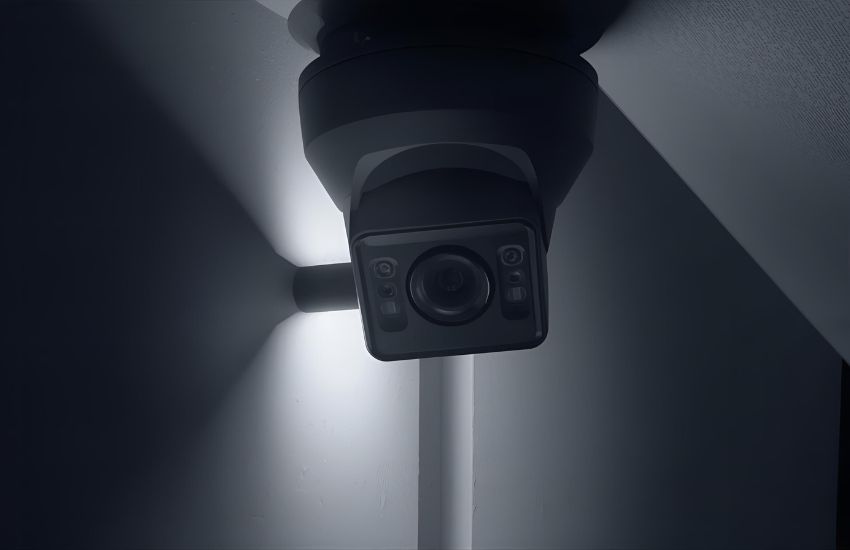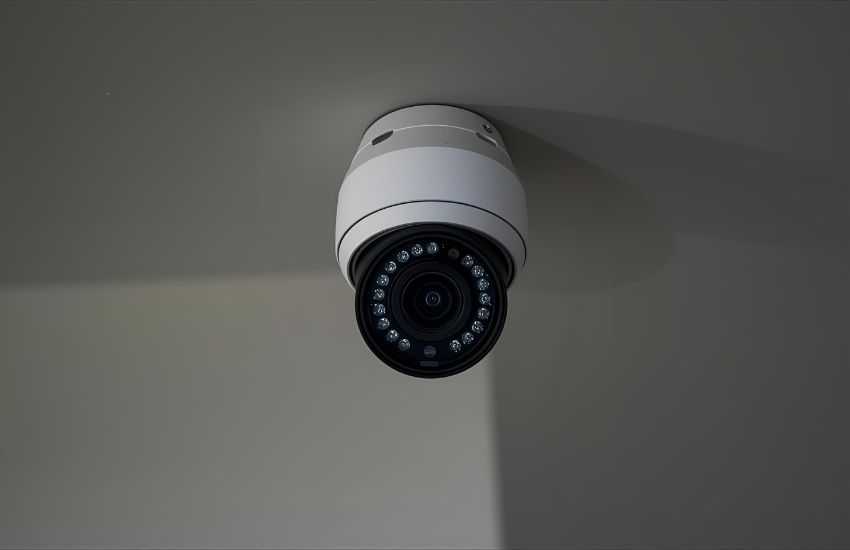Not every surveillance situation benefits from invisible light. In fact, there are cases where the infrared (IR) LEDs on your security camera may interfere with visibility or reflect off surfaces, degrading image clarity. Whether you’re filming through a glass window or managing lighting in a confined area, knowing when and how to disable your camera’s IR functionality can significantly enhance your surveillance strategy.
Turning off the IR LEDs can prevent window glare, reduce unwanted reflections, and enable discreet monitoring—especially behind glass or in well-lit areas. It’s ideal for smarter, safer surveillance where ambient light or external illumination is sufficient. You can manually disable IR LEDs through your camera’s settings, enhancing performance without compromising visibility during nighttime.
In this blog, you’ll discover why disabling IR LEDs might be necessary, how it impacts your camera, and the precise steps to turn off the IR effectively. You’ll also gain insight into related settings, such as lighting adjustments and device-specific controls, to ensure your surveillance remains reliable and secure in every scenario.
How Infrared Light and IR LEDs Affect Your Security Camera Performance

Infrared light plays a central role in how your security camera captures images in low-light or nighttime conditions. While beneficial in many surveillance environments, it’s important to recognize that infrared can sometimes hinder, rather than help, your camera’s overall performance—especially when reflections come into play.
When infrared light from your camera bounces off nearby surfaces like glass, walls, or plastic enclosures, it can create a reflection that washes out the image, reduces visibility, and renders footage ineffective. This issue is especially common when monitoring through windows or glossy indoor materials. In these cases, opening the camera to physically adjust the position of the lens or housing may seem like a solution, but it’s rarely advisable unless you are following a manufacturer-approved guide or supported by technical expertise.
To mitigate reflection, many cameras offer a mode without the IR LEDs, giving you the ability to capture footage under natural or artificial light without activating the infrared components. This approach is often the most effective way to maintain image clarity in tricky lighting environments. Whether you’re monitoring an office lobby, storefront window, or enclosed hallway, minimizing reflection helps your camera perform as intended—delivering sharper, more accurate video without distortion. By understanding how infrared interacts with your surroundings, you can make smarter choices about when to rely on IR features and when to disable or adjust them for optimal clarity.
See more about…LPR Camera Access
Step-by-Step Guide to Turn Off the IR LEDs and Disable Tapo Camera IR LEDs

Disabling infrared functionality can be an essential step in refining your surveillance setup—especially in environments where infrared light causes glare or disrupts image clarity. Whether you’re aiming for discreet monitoring or you’re experiencing reflection issues through glass, knowing how to turn off the IR LEDs on your security camera can optimize performance and deliver sharper results.
Understand Why You Might Want to Disable IR LEDs
In certain surveillance scenarios—like filming through a window or monitoring a brightly lit area—infrared LEDs may reduce visibility rather than enhance it. Infrared reflections can bounce off glass surfaces, overexpose nearby objects, or conflict with external lighting systems. When this occurs, it’s not only acceptable but advisable to disable IR LEDs for a cleaner viewing experience.
How to Turn Off the IR LEDs on Most Security Cameras
To begin, access your security camera’s settings through its mobile app or desktop interface. Look for image or video settings, where you may find an option labeled “Infrared”, “Night Vision,” or “IR Mode.” You can then choose to turn off the IR LEDs or switch to day mode if your camera allows manual control. This process does not usually require opening the camera, and can often be reversed at any time.
If your device features a light sensor, ensure that there is enough light in the monitored area to maintain image clarity after disabling infrared light.
How to Disable Tope Camera IR LEDs
For Tope users, the process is straightforward. Open the Tope app, select your camera feed, tap the settings gear, and navigate to “IR LED” or “Night Vision” settings. From there, you can disable Tope camera IR LEDs by selecting the appropriate mode without the IR LEDs or switching to “Off” in the infrared settings menu. This step is particularly useful if your surveillance area is already well-lit or impacted by infrared reflection.
Final Thoughts on IR Management for Reliable Surveillance
Learning how to turn off the IR LEDs is a key skill in customizing your surveillance system for specific environments. Whether you’re fine-tuning indoor visibility or configuring an outdoor view through glass, the ability to control infrared settings ensures that your security camera serves your needs with greater accuracy and reliability.
See more about...360 Degree Surveillance Camera
Conclusion
Understanding how reflection affects your security camera’s performance is essential for maintaining reliable, high-quality surveillance. Whether you’re using a TP-Link device, such as the C110, or another brand, addressing infrared reflection challenges requires thoughtful configuration. You may need to manually adjust camera settings or lighting sources to reduce glare and improve clarity.
In environments with glass surfaces or artificial illumination, reflection can severely impact image quality—especially during daytime monitoring. A practical method to reduce this effect includes applying black tape around the lens or adjusting the hardware position to minimize internal glare. Unlike systems that rely on continuous IR light, you can often manage lighting independently, striking a balance between visibility and overexposure.
Making these adjustments in detail ensures your surveillance setup delivers accurate results without interference. Whether you’re aiming to improve brightness levels, avoid reflection, or carefully detach unnecessary IR components, proactive control over your camera’s behavior leads to a more effective and secure environment.
See more about...Video Surveillance from Android & iPhone Mobile App
Frequently Asked Questions (Why and How to Turn Off the IR LEDs for Smarter, Safer Surveillance Solutions)
How do I turn off the IR sensor?
Open your camera’s app or web interface, go to Settings → Image/Night Vision or IR, and toggle Night Vision/IR or IR Cut Filter to OFF. If unavailable, disable scheduled night mode or set IR to Auto. For older models, use the physical IR switch/jumper or cover the IR LED. Consult the manual for model-specific steps.
How do you stop IR glare on security cameras?
Reduce IR glare by angling the camera slightly downward, using an external IR cut filter or adjustable IR LEDs, and installing a hood or sunshield. Keep lenses clean, avoid placing cameras facing reflective surfaces or glass, and place IR sources off-axis. Use higher-quality cameras with adaptive IR or lower-intensity LEDs to minimize bloom.
What is the use of IR LED in CCTV cameras?
IR LEDs in CCTV cameras are used to provide illumination in low-light or complete darkness. They emit infrared light that is invisible to the human eye but visible to the camera sensor, enabling clear night vision footage. This allows continuous surveillance and effective monitoring during nighttime or in areas with poor lighting conditions.
How do I turn off the IR on my Hikvision camera?
To turn off the IR on your Hikvision camera, log in to the camera’s web interface, go to Configuration > Image > Display Settings > Day/Night Switch, and select Day mode to disable IR LEDs. Alternatively, in some models, go to Configuration > System > Maintenance and turn off the Smart IR or IR Light option.
